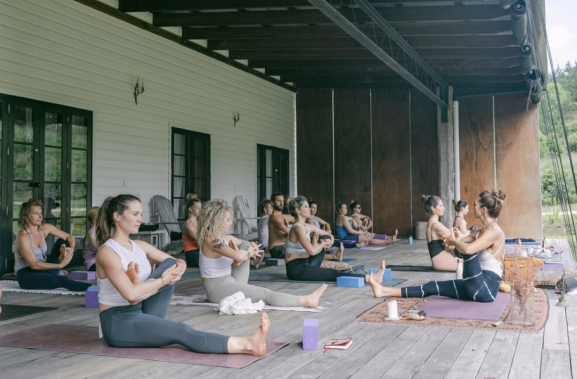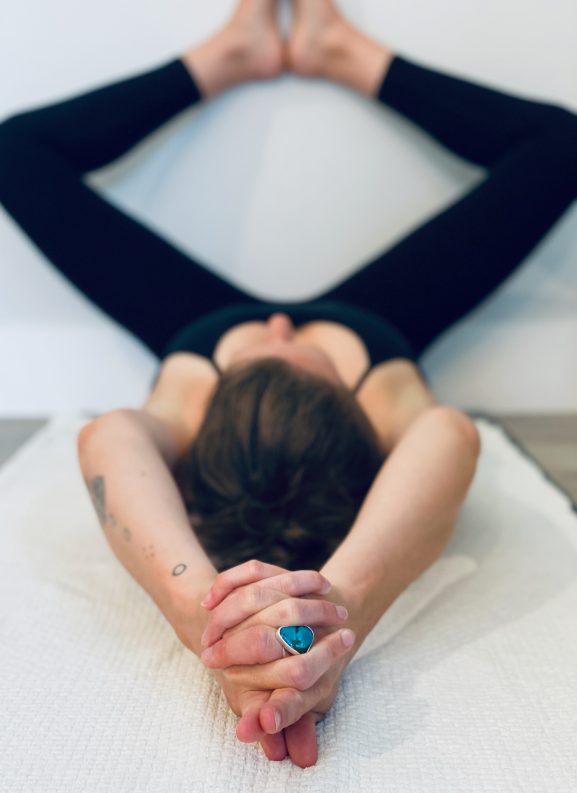Yoga Types: A Beginners Guide
Yoga Types: A Beginners Guide
The practice of yoga originates from Eastern philosophy that is centuries old. Initially, the sole purpose of practicing yoga was to experience spiritual enlightenment. In Sanskrit (the ancient language of India), yoga translates as “yoke” or “union,” and describes the integration of mind and body to create a greater connection with one’s own pure, essential nature.
So to see yoga as having physical benefits alone, would only diminish what this entire system has to offer as a whole. Yoga offers a myriad of benefits for both your physical body and your mind. This ancient practice, now adopted by the modern world, is both a physical practice; helping you develop strength, balance and flexibility as well as a mental practice; teaching us meditation and helping to reduce anxiety and stress.
When you’re trying to determine which of the different types of yoga is best for you, remember that there is no right or wrong one. Yoga isn’t necessarily a one-size-fits-all practice and it could take trying a few classes or even a few different teachers before you find your feet. You may also find that these different yoga styles complement each other and could all be right for you, depending on how you’re feeling.
We’ve pulled together a beginners guide to some of the different types of yoga available, to help you find a style that works for you and your body.
Hatha Yoga
Hatha yoga literally refers to the physical practice of yoga, the asana. Nearly every type of yoga class taught in the West is derived from Hatha yoga. Classes often focus on the basics and invite students to move at a slower pace. You probably won’t work up a sweat in a hatha yoga class, but you should end up leaving class feeling longer, looser, and more relaxed. Because of its slower pace, Hatha is a great class if you’re just starting your yoga practice. You will get a gentle introduction to the most basic yoga postures and it will help you learn the foundations.
Iyengar Yoga
Iyengar yoga, named after and developed by B. K. S. Iyengar, is great for learning the correct alignment for each yoga pose. Props including belts, blocks and pillow-like bolsters are used to help students get into poses, focusing on the structural alignment of your body. This is a great place to start if you’re new to yoga, injured or simply feeling tightness in your body.
Ashtanga Yoga
Ashtanga yoga is a more vigorous style of yoga. Popularised by K. Pattabhi Jois during the 20th century, a class consists of six series of specifically sequenced yoga poses that are performed in the exact same order in each class. An exercise in mindfulness, flexibility and ultimately meditation, most modern yoga studios offering Ashtanga yoga classes will have a teacher calling out the poses.
Vinyasa Yoga
The word Vinyāsa refers to the link between movement and breath. In a Vinyāsa yoga class, the teacher will lead you through a sequence of yoga poses (asana) that flow from one to the other. You will learn to connect your movement with your breath. If you’re new to yoga, it is a good idea to take a few classes in a slower style of yoga first to get a feel for the poses. Vinyāsa yoga flow is often used as an umbrella term for many other yoga styles. You might see it on your studio timetable listed as; flow yoga, flow-style yoga, dynamic yoga or vinyāsa flow. It is influenced by ashtanga yoga.
Kundalini Yoga
First introduced to the western world in the late 70s by Yogi Bhajan, Kundalini yoga is a combination of breath, movement, and sound. It derives from the Sanskrit word kundal, which translates to “coiled energy.” The idea is that we all have energy gathered at the base of our spine and through the practice of Kundalini, we bring that energy up our spine through the seven chakras, and out the crown of our head. In a Kundalini yoga class you will be guided through meditation, breathing techniques and chanting, as well as the yoga postures.
Yin Yoga
Yin yoga comes from the Taoist tradition and focuses on passive, seated postures that target the connective tissues in the hips, pelvis and lower spine. In a class, you will be guided into each pose which you will hold for anywhere from one to ten minutes. The aim is to increase flexibility and encourage a feeling of release and letting go. Yin yoga is accessible to students of all levels and is a wonderful way to learn the basics of meditation and stilling the mind. Discover more about the *Benefits of Yin yoga* and how it can help relieve both mental and physical stress.
Restorative Yoga
Restorative yoga is a meditative practice. Similarly to Yin, Restorative yoga classes involve the use of props like blocks, straps, sandbags, bolsters, and blankets to encourage a passive release of mind and body tension. Restorative yoga works to release deep tension by inviting you to fully relax. Restorative yoga is perfect for beginners but also an important practice for all yogis. If you’re looking for a powerful stress release and meditative state, this is the class for you.


